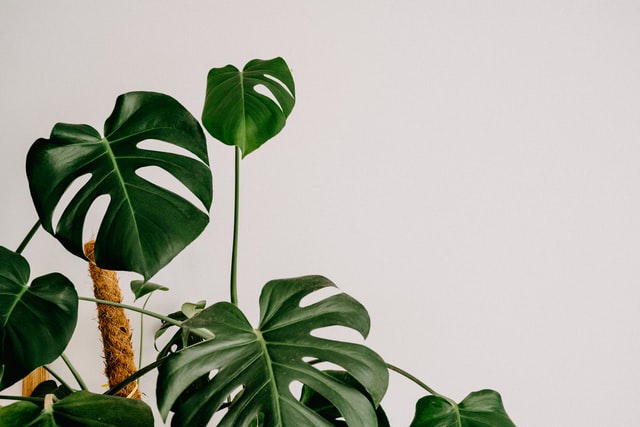Monsteras, coming from Central America, are recognized for their natural leaf holes, earning the nickname “Swiss Cheese Plant.” The fenestrations in the Monstera’s leaf holes are hypothesized to improve light fleck collecting on the forest floor by widening the leaf’s spread while lowering the number of leaf cells required to maintain the leaf. 
Monsteras are vining plants that will trail over the edge of the container or climb up a stake or trellis.
Monsteras are easy to care for and require only the appropriate amount of sunshine, water, and temperature. Here’s some advice on how to look after your plant and keep it healthy.
Types of Monstera
Monstera deliciosa leaves come in a variety of sizes and shapes. As stated by the professionals at https://www.urbanorganicyield.com/monstera-plants/ there are around 48 species and each plant has a little color variation and a slightly varied leaf structure. Here are a few of them.
Monstera deliciosa borsigiana
If you don’t have a lot of floor space but yet want a lovely monstera, this type is for you. In comparison to other types, they tend to develop fast and are smaller in size.
Monstera deliciosa variegata
It is a delicious kind of Monstera. The leaves of this monstera deliciosa have a yellowish-cream dappled pattern. This type of variation takes a long time to develop and is less prevalent in houses.
Monstera deliciosa albovariegata
Its leaves have unique white variegation that distinguishes it from other Monstera deliciosa types. There are no two leaves alike! Some leaves turn entirely white, while others develop speckled patterns. Similar to M. deliciosa variegata, this is another uncommon monstera variation.
Care Tips
To care for a Monstera, follow these guidelines. This tutorial will explain how to water a Monstera, as well as its light, temperature, and humidity requirements, as well as any additional care it may require to thrive.
-
1. Sunlight
The proper quantity of sunshine is required for the growth of a monstera’s leaves. This evergreen enjoys bright, indirect sunshine and steady temperatures of 65 to 75 degrees Fahrenheit. It should be placed in a location that receives filtered, indirect sunlight. A monstera’s leaves can turn yellow or burn if exposed to too much direct sunshine. If you observe your plant’s leaves straining for sunshine, you may have to rotate it, so keep an eye on it.
-
2. Water
During the growth season, give the plant a weekly or biweekly watering. When the first few inches of soil are dry, water your plant. To test the soil’s dryness, poke it with your finger. Overly damp soil can cause root rot in Monsteras, thus they require peaty, well-draining soil. Aerial roots can form on some plants over time. You may either wrap these roots in damp sphagnum moss or route them to the soil, where they will receive plenty of water.
-
3. Temperature
The monstera plant thrives in temperatures ranging from 68 to 86 degrees Fahrenheit. Because it is native to tropical rainforests, this plant will thrive in an equally tropical and humid environment. If you reside in a dry climate, misting your monstera deliciosa weekly might help to improve the humidity surrounding the plant.
-
4. Pests
Mealybugs, scales, aphids, and spider mites may all be found under the leaves of Monsteras. To maintain their leaves clean and dust-free, wipe them down once a week. Their dark green leaves remain healthy and lustrous as a result of this periodic upkeep. If you notice little creatures in your plant, wipe them away with a mild dishwashing solution or a moderate pesticide.
-
5. Repotting
Monsteras, in particular, are enormous trousers that require repotting every few years to keep up with their increasing root systems. To allow your monstera more area to develop, choose a pot that is a few inches taller and wider than the previous one. You may either maintain it in the same pot, repot it less regularly, or cut back its leaves on a regular basis to keep it manageable.
Toxicity
Because all portions of this plant are deadly to people and pets except the mature fruit, the bigger species is not a good choice for pet owners. Choose a little variety, such as M. deliciosa borsigiana, to put high on shelves and out of reach of curious furry pals. Due to the obvious calcium oxalates present in its sap, the plant can induce stomach discomfort if eaten and skin irritation if handled. It’s still safe to have in your house as long as you don’t eat any of the plant’s parts and handle it with caution.
Monstera plants are a beautiful addition to any house, and they’re also quite easy to care for. Taking good care of your monstera will result in many compliments and a healthy plant!
Related Posts: